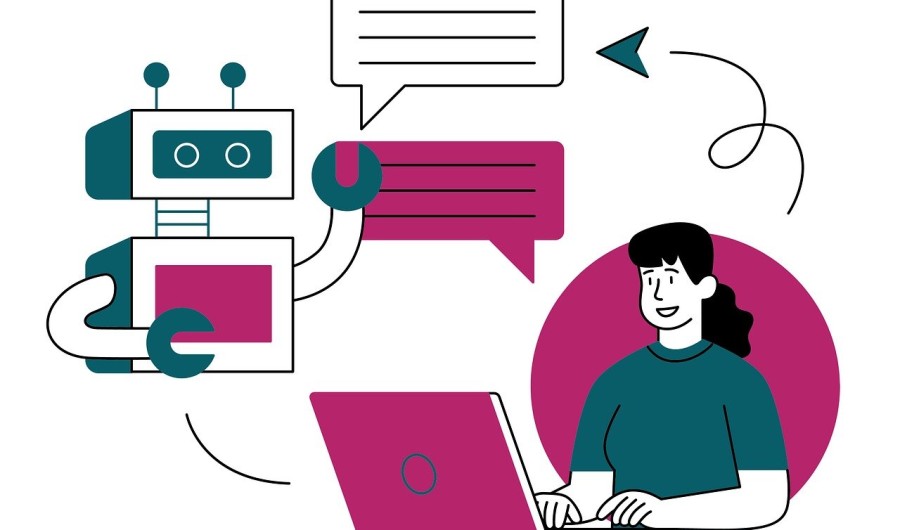
Can Artificial Intelligence Simplify Web Design?
Whether you’re worried about the rise of the machines or see artificial intelligence as an indispensable tool, one thing is clear: it’s here to stay. Maybe you’ve already been using it in your web design process, or maybe you’re still toying with the idea.
Whatever the case is, in this post, we’ll look at how AI can simplify web design. If you use it smartly, it can shorten workflows and automate tedious tasks. Let’s see where else it comes in handy.
Automated Design Generation
AI image generators have come under fire because they draw “inspiration” from original artists. The backlash is that this is akin to stealing intellectual property. While this is an issue, you can still use AI to design graphic elements that are more generic in nature.
For example, you can have it create website layouts and design elements. You simply plug in your required parameters, perhaps suggest a color palette, and the system does the rest. This can save designers time and a lot of tedious work by giving them a basis to work from.
Personalization
Today’s consumers want more personalized web experiences. They don’t want to have to sift through all the information on a site to find what they want. AI-based design can analyze user data to create a more personalized experience.
For example, it might optimize the screen according to the customer’s phone or internet connection. The site might also deliver resources like helpful articles based on things the customer was browsing for.
We can take this a step further and have our chatbots make personalized product recommendations based on site activity.
Content Creation
AI can generate content such as text, images, and even videos. It can then integrate these into your design. However, this comes with a caveat; you need to be careful how you use this feature.
AI can create compelling product descriptions and easy-to-read articles. However, it doesn’t always stick to the facts. Also, it often simply summarizes what it finds online and regurgitates it. Therefore, it’s a good idea to have a human writer check the work.
Google’s helpful content update says that you should add something new with your article. If you want to rank well in search results, you’ll need to rewrite AI-written content.
We’ve already mentioned the potential issue with artists and AI-based image generators. If you plan to use this feature, make sure the work’s 100% original.
Providing Clients With a Virtual Assistant
Companies are constantly looking for ways to improve the customer experience. If you can build this kind of functionality into a website, you should make your clients happier.
One way to do so is to incorporate a chatbot or virtual assistant. You could have this bot answer simple questions while it escalates more complex ones to outsourced e-commerce support services.
Optimization
You can use an AI-based program to check your site and make recommendations before it goes live. It can analyze the data and make suggestions about how to optimize the design so it performs better. It can check things like:
- Loading speeds
- Mobile responsiveness
- Accessibility
The advantage of having AI perform these tasks is that it can get the information you need in minutes. If you had to manually check each feature, it would take hours or days.
Testing and Debugging
Is there a bug you just can’t find? Running the design through an AI-based program might make it easier to pick up these design issues. What’s more, you can ask AI to run A/B tests to determine which versions of your site will perform better. It can create a virtually identical design, tweaking one element at a time.
The upside of running simulations is that you get an idea of how your site will perform without risking a smack from Google. This gives you some freedom to tweak your site until you get its best possible version to publish.
SEO
AI tools can optimize web design elements so that your site performs better in searches. It can write meta tags, create alt tags, and generally incorporate more on-page SEO.
It can analyze the top-performing pages in your category and make recommendations for your site. The upshot is that your page should rank better from day one.
Design Assistance
AI-powered design assistants can provide real-time suggestions and edits. You don’t have to act on all of these, but they can prove useful if you need to make informed decisions quickly. You can also task the machine to handle repetitive tasks that take a long time.
Conclusion
There’s been some discussion about how AI will replace humans in the workplace. While it can create a passable website, it’s not yet able to mimic true human innovation. We have an undefinable spark of creativity that the machines lack.
What AI can do is automate repetitive and mind-numbingly boring tasks so we can focus on the more creative side of design.






